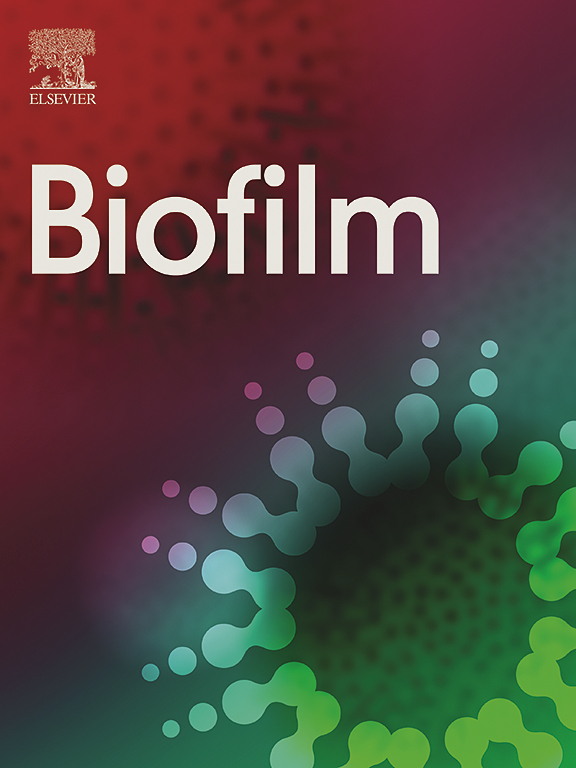Assessing the impact of UV-C exposure on pre-existing cultured marine diatom biofilms
IF 4.9
Q1 MICROBIOLOGY
引用次数: 0
Abstract
Ultraviolet-C (UV–C) has been considered as a potential tool in the maintenance and prevention of marine biofouling. However, it is unclear how irradiation disturbs biofouling, specifically biofilms, or the duration and frequency needed to reduce or eliminate their growth. The marine diatom, Navicula incerta, was used in a two-part lab study to determine the minimum time between UV-C duty cycling (also known as interval testing) that would result in the reduction and prevention of marine biofilms. The first study assessed the diatom's metabolic activity, morphology, behavior, and recovery to understand the influence of UV-C on the biofilm. Cell viability, biofilm matrixes, and chlorophyll a were significantly reduced immediately following UV-C exposure, yet when exposure was ceased biofilms began to recover. Based on these results, the second study investigated the duty cycle duration required to limit the growth of the cultured biofilm. Duty cycle testing was able to initially deplete cell viability and chlorophyll a; however, in between exposures, recovery was evident. These findings indicate that shorter (10 min; 1.86 J/cm2) doses of UV-C exposures must be applied more frequently than more prolonged doses (60 min; 11.16 J/cm2) to keep biofilm formation minimal. The duty cycles established here also provide a guideline of efficacy for future studies that can be applied to biofilms in both laboratory and the field.
评估UV-C暴露对预先培养的海洋硅藻生物膜的影响
紫外- c (UV-C)被认为是一种潜在的维护和预防海洋生物污染的工具。然而,目前尚不清楚辐照如何干扰生物污垢,特别是生物膜,以及减少或消除其生长所需的持续时间和频率。一项由两部分组成的实验室研究使用了海洋硅藻Navicula incerta,以确定UV-C占空循环(也称为间隔测试)之间的最短时间,这将导致海洋生物膜的减少和预防。第一项研究评估了硅藻的代谢活性、形态、行为和恢复,以了解UV-C对生物膜的影响。暴露于UV-C后,细胞活力、生物膜基质和叶绿素a立即显著降低,但当暴露停止后,生物膜开始恢复。基于这些结果,第二项研究调查了限制培养生物膜生长所需的占空比持续时间。占空比测试能够最初耗尽细胞活力和叶绿素a;然而,在两次曝光之间,复苏是明显的。这些结果表明较短(10分钟;1.86 J/cm2)剂量的UV-C照射必须比较长时间的剂量(60分钟;11.16 J/cm2),使生物膜形成最小化。这里建立的占空比也为未来的研究提供了功效指南,可以应用于实验室和现场的生物膜。
本文章由计算机程序翻译,如有差异,请以英文原文为准。
求助全文
约1分钟内获得全文
求助全文

 求助内容:
求助内容: 应助结果提醒方式:
应助结果提醒方式:


